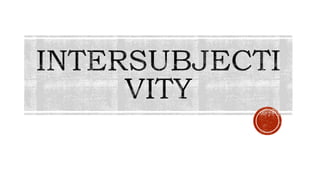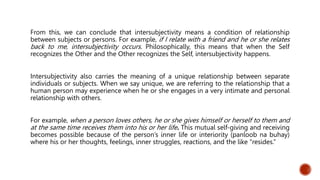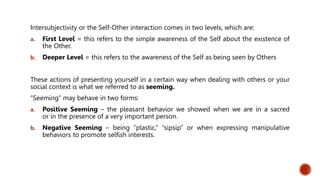Intersubjectivity refers to the shared understanding and mutual recognition between subjects or persons. It occurs when individuals engage with one another on a level beyond simple awareness, and recognize each other as unique subjects. Several philosophers have explored intersubjectivity, including Confucius, who emphasized practical humanism and social harmony, Martin Buber's "I-Thou" conceptualization of interpersonal relationships, and Karol Wojtyla's notion of participation and gift of self with others in community. Authentic dialogue is considered one form of intersubjective relationship.











